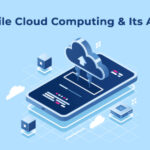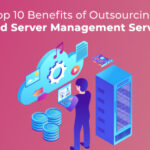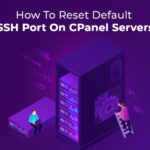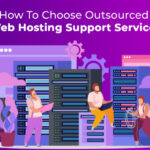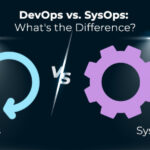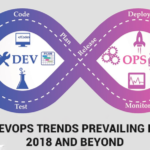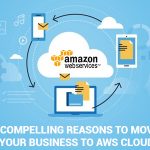Hardware requirements
- Front-end Web server and application server computers: a dual-processor computer with processor clock speeds of 2.5-gigahertz (GHz) or higher and a minimum of 2 gigabytes (GB) of RAM.
- Back-end database server: a dual-processor computer with processor clock speeds of 2.0 GHz or higher and a minimum of 2 GB of RAM.
Software requirements Web and Application Server
- Microsoft Windows Server 2003 (Standard, Enterprise, Datacenter, or Web Edition) with Service Pack 1 (SP1)
- Microsoft .Net Framework 3.5
- The Web server and application server computers must be configured as Web servers running Microsoft Internet Information Services (IIS) in IIS 6.0 / IIS 7.0
Back-End Database Server
The back-end database server computer must be running Microsoft SQL Server 2008 or running Microsoft SQL Server 2005 or Microsoft SQL Server 2000 with Service Pack 3 (SP3) or later
Note : Install standalone sql server or clustered sql server 2008/2005 on a separate machine. It is required during the sharepoint installation.
Security accounts required for the Sharepoint installation
To install Office SharePoint Server 2007 in a server farm environment, at-least 2 accounts are required:
A user account that you can use to install Office SharePoint Server 2007 and run the SharePoint Products and Technologies Configuration Wizard. This account must be:
- A domain user account.
- A member of the Administrators group on each of your front-end servers.
- A member of the SQL Server Logins, which grants login access to your SQL Server instance.
- A member of the SQL Server Database Creator server role, which grants permission to create and alter databases.
- A member of the SQL Server Security Administrators server role, which grants permission to manage server logins.
Install and configure IIS
IIS is not installed or enabled by default in Windows Server 2008. To make your server a Web server, you must install and enable IIS.
- Click Start, point to All Programs, point to Administrative Tools, and then click Configure Your Server Wizard.
- On the Welcome to the Configure Your Server Wizard page, click Next.
- On the Preliminary Steps page, click Next.
- On the Server Role page, click Application server (IIS, ASP.NET), and then click Next.
- On the Application Server Options page, click Next.
- On the Summary of Selections page, click Next.
- Click Finish.
Install and configure 2007 Office SharePoint Server
It is recommended that you install and configure Office SharePoint Server 2007 on all of your front-end servers before you configure Office SharePoint Server 2007 services and create sites. If you want to build a minimal server farm configuration, and incrementally add front-end servers to expand the farm, you can install and configure Office SharePoint Server 2007 on a single front-end server and configure the front-end server as both a Web server and an application server. Regardless how many front-end servers you have in your server farm, you must have SQL Server running on at least one back-end database server before you install Office SharePoint Server 2007 on your front-end servers.
Run 2007 Office SharePoint Server Setup
- Run Officeserver.exe, on one of your Web server computers.
- On the Enter your Product Key page, enter your product key and click Continue.
- On the Read the Microsoft Software License Terms page, review the terms, select the I accept the terms of this agreement check box, and then click Continue.
- On the Choose the installation you want page, click Advanced.
- click Complete, and then click Install Now.( that will act as an application server and Web server)
- When Setup finishes, a dialog box appears telling you that you must complete the configuration of your server. Make sure that the Run the SharePoint Products and Technologies Configuration Wizard now check box is selected.
Run the SharePoint Products and Technologies Configuration Wizard
After Setup finishes, you can use the SharePoint Products and Technologies Configuration Wizard to configure Office SharePoint Server 2007. The SharePoint Products and Technologies Configuration Wizard automates several configuration tasks, including: installing and configuring the configuration database, installing Office SharePoint Server 2007 services, and installing SharePoint Central Administration. Use the following instructions to run the SharePoint Products and Technologies Configuration Wizard.
- On the Welcome to SharePoint Products and Technologies page, click Next.
- Click Yes in the warning dialog box that appears notifying you that some services might need to be restarted during configuration.
- On the Connect to a server farm page, select the following option
- If this is the first front-end server that you are configuring in your server farm, click No, I want to create a new server farm, and then click Next.
- On the Specify Configuration Database Settings dialog box, in Database server, type the name of the computer that is running SQL Server, select the following option
- If this is the first server that you are configuring in your server farm, type a name for your configuration database in Database name, or use the default database name.
- In User name , type the user name of the account used to connect to the computer running SQL Server (be sure to type the user name in the format DOMAINusername).
- In Password, type the user’s password, and click Next.
- On the Configure SharePoint Central Administration Web Application page, select the Specify port number check box and type a port number if you want the SharePoint Central Administration Web application to use a specific port, or leave the Specify port number check box unchecked if you do not care which port number the SharePoint Central Administration Web application uses.
- On the Configure SharePoint Central Administration Web Application dialog box, select NTLM authentication (the default), click Next.
- On the Completing the SharePoint Products and Technologies Wizard page, click Next.
- On the Configuration Successful page, click Finish.
Adding nodes to the existing server farm
It is very similar to our base installation. we should install share point on the machines which you want to join to the server farm.
- On the Welcome to SharePoint Products and Technologies page, click Next.
- Click Yes in the warning dialog box that appears notifying you that some services might need to be restarted during configuration.
- On the Connect to a server farm page, select the following option
- If you have already configured your first server in your server farm, click Yes, I want to connect to an existing server farm, and then click Next.
- On the Specify Configuration Database Settings dialog box, in Database server, type the name of the computer that is running SQL Server, select the following option
- If this is the first server that you are configuring in your server farm, type a name for your configuration database in Database name, or use the default database name.
- In User name , type the user name of the account used to connect to the computer running SQL Server (be sure to type the user name in the format DOMAINusername).
- In Password, type the user’s password, and click Next.
- On the Configure SharePoint Central Administration Web Application page, select the Specify port number check box and type a port number if you want the SharePoint Central Administration Web application to use a specific port, or leave the Specify port number check box unchecked if you do not care which port number the SharePoint Central Administration Web application uses.
- On the Configure SharePoint Central Administration Web Application dialog box, select NTLM authentication (the default), click Next.
- On the Completing the SharePoint Products and Technologies Wizard page, click Next.
- On the Configuration Successful page, click Finish.
looking to develop an app for Android or any other platform ,we are among the leading mobile app development companies in Los Angeles,USA for iOS, Android & Windows. checkout our mobile application development services


